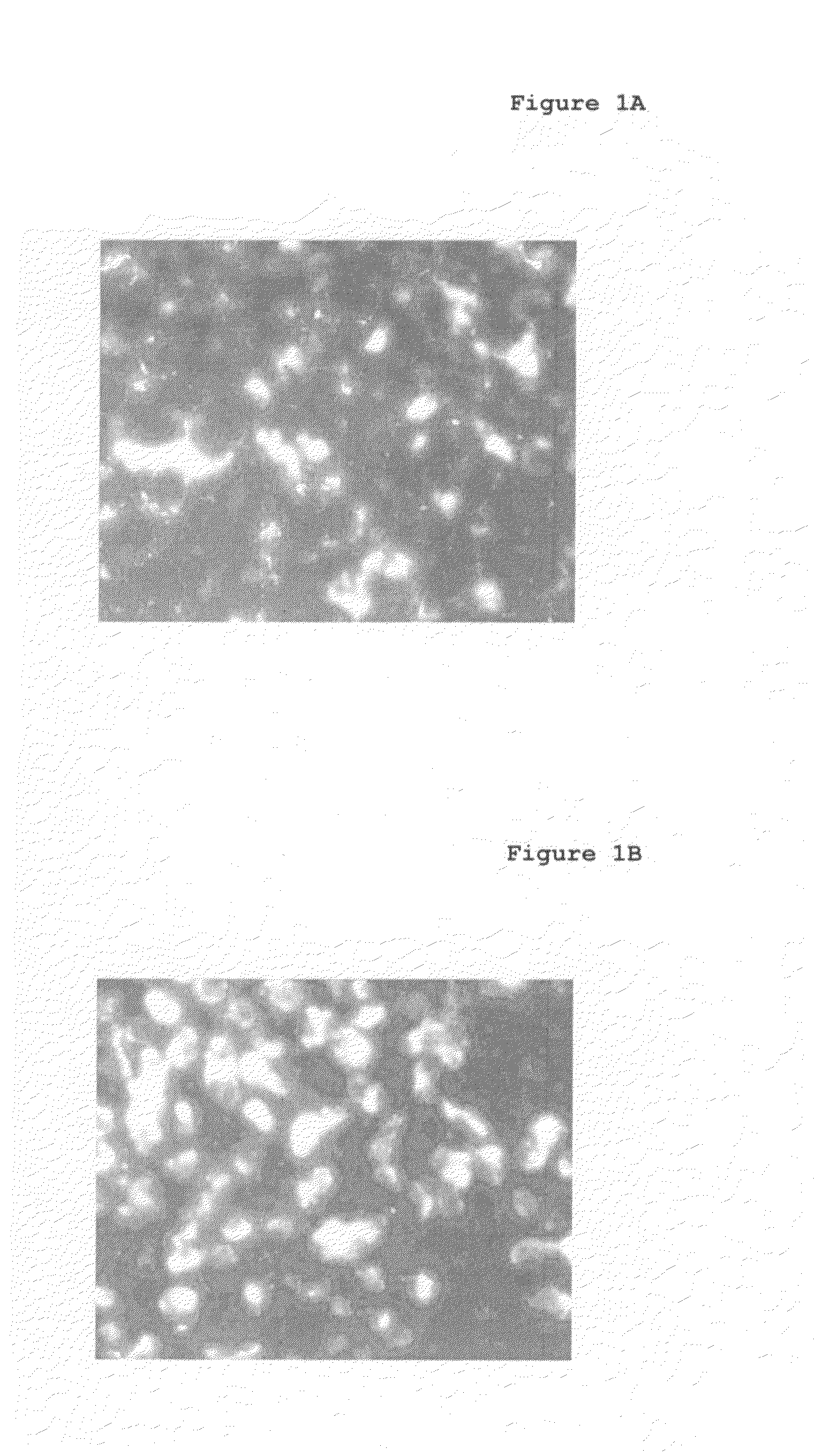Amphoteric liposomes and their use
a liposome and amphoteric technology, applied in the field of amphoteric liposomes, can solve the problems of difficult to combine the two requirements, difficult to release the enclosed active ingredient once, and significant disadvantages of anionic character of chems, and achieve the effect of producing simply and inexpensively
- Summary
- Abstract
- Description
- Claims
- Application Information
AI Technical Summary
Benefits of technology
Problems solved by technology
Method used
Image
Examples
example 1
Preparation and Charge Properties of Amphoteric Liposomes with Charge Carriers, which can be Charged Positively and are Constantly Charged Negatively
[0095]His-Chol (5 mg) and 7.8 mg of POPC and 2 mg of DPPG are dissolved in 4 ml of a 1:1 (v / v) mixture of chloroform and methanol and dried completely in a rotary evaporator. The lipid film is hydrated with 4.3 mL of the appropriate buffer (10 mM KAc, 10 mM HEPES, 150 mM NaCl, pH 7.5, in a lipid concentration of 5 mM by a five-minute treatment with ultrasound. Subsequently, the suspension is frozen and, after thawing, extruded several times (Avestin LiposoFast, polycarbonate filter with a 200 nm pore width). For measuring the zeta potential, the final concentration of the liposomes is adjusted to a value of 0.2 mM. For the dilution, the buffer system, named above, is used at a pH of 7.5 or 4.2. The zeta potentials measured lie between −18 mV (at pH 7.5) and +35 mV (at pH 4.2).
example 2
Preparation and Charge Properties of Amphoteric Liposomes with Constant Positive and Variable Negative Charge Carriers
[0096]POPC, DOTAP and CHEMS are dissolved in the molar ratios given below in 4 mL of a 1:1 (v / v) mixture of chloroform and methanol and evaporated completely in the rotary evaporator. The lipid film is hydrated with 4.3 mL of the appropriate buffer (10 mM KAc, 10 mM HEPES, 150 mM NaCl, pH 7.5, in a total lipid concentration of 5 mM by a five-minute treatment with ultrasound. Subsequently, the suspension is frozen and, after thawing, excluded repeatedly (Avestin LiposoFast, polycarbonate filter with a 200 nm pore width). The Table below shows the zeta potentials as a function of pH.
[0097]Composition of the liposomes in mole percent
[0098]
liposome 1POPC 50DOTAP 40Chems 10liposome 2POPC 50DOTAP 30Chems 20liposome 3POPC 50DOTAP 25Chems 25liposome 4POPC 50DOTAP 20Chems 30liposome 5POPC 50DOTAP 40Chems 10
[0099]
TABLE 1Zeta Potentials in mVLiposomeLiposomeLiposomeLiposomeLipo...
example 3
Preparation and Charge Properties of Amphoteric Liposomes with Complete Switchability in One Compound
[0101]His-Chol (5 mg) and 9.8 mg of POPC are dissolved in 4 ml of a 1:1 (v / v) mixture of chloroform and methanol and dried completely in a rotary evaporator. The lipid film is hydrated with 4.3 niL of the appropriate buffer (10 mM KAc, 10 mM HEPES, 150 mM NaCl, pH 7.5, in a lipid concentration of 5 mM by a five-minute treatment with ultrasound. Subsequently, the suspension is frozen and, after thawing, extruded several times (Avestin LiposoFast, polycarbonate filter with a 200 nm pore width). The course of the zeta potential at different pH values and ionic strengths is shown in the table below (Table 2).
[0102]
TABLE 2pHWithout Salt100 mM of NaCl445.620.2526.92.26−4.1−5.27−31.4−15.38−45.7−25.4
PUM
| Property | Measurement | Unit |
|---|---|---|
| Fraction | aaaaa | aaaaa |
| Fraction | aaaaa | aaaaa |
| Size | aaaaa | aaaaa |
Abstract
Description
Claims
Application Information
 Login to View More
Login to View More - R&D
- Intellectual Property
- Life Sciences
- Materials
- Tech Scout
- Unparalleled Data Quality
- Higher Quality Content
- 60% Fewer Hallucinations
Browse by: Latest US Patents, China's latest patents, Technical Efficacy Thesaurus, Application Domain, Technology Topic, Popular Technical Reports.
© 2025 PatSnap. All rights reserved.Legal|Privacy policy|Modern Slavery Act Transparency Statement|Sitemap|About US| Contact US: help@patsnap.com

